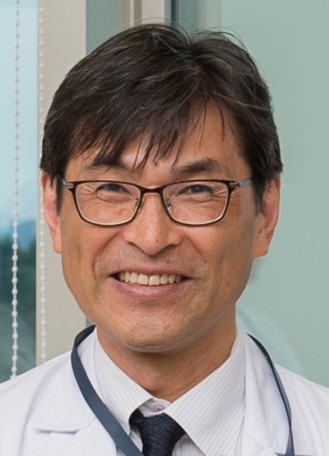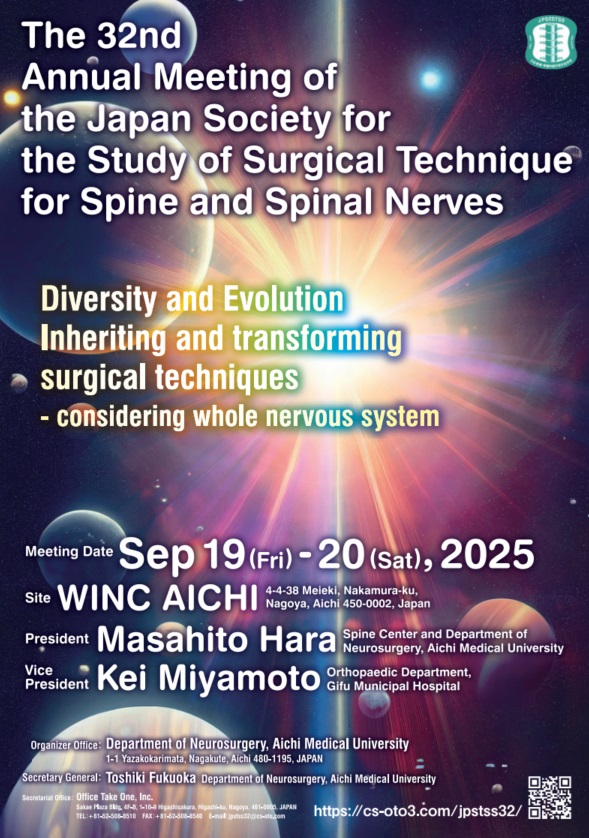Greetings from the president

I am Masato Hara, professor at the Spine Center of Aichi Medical University Hospital and president of the 32nd Annual Meeting of the Japanese Society of Spine and Spinal Neurosurgery (JPSTSS). I have been participating since its predecessor meeting, because the name of the society uses the words ‘nerve’ in addition to spine and spinal cord, which suits my clinical style very well and is familiar to me, so I started participating. The atmosphere of the society is warm, there is no barrier between neurosurgeons and orthopedic surgeons, and I attend every year without fail.
The philosophy of the society set forth by Director Kumano has not faded and has become more persuasive. It is 1. Individual participation, 2. Collaborative study between orthopedic surgeons and neurosurgeons, and 3. Simultaneous progress with the world. The 2025 academic meeting will be held with these philosophies and the name of the society in mind.
Now, we neurosurgeons and orthopedic surgeons have different initial education. The general public think that orthopedics deals with the musculoskeletal system and neurosurgery deals with nerves, especially the brain. However, the spine is part of the musculoskeletal system and often degenerates with age, causing neurological symptoms due to nerve compression by surrounding degenerative structures. Therefore, it is impossible to understand the pathology without considering both the musculoskeletal system and the nervous system. That the peripheral nerves are also compressed and pulled due to changes in the surrounding environment over time caused by repetitive movements and degeneration of the nerves themselves due to aging caused neurological symptoms. Nerve is connected from the brain to the spinal cord, nerve roots, nerve plexuses, and peripheral nerves, and even if the lesions are in different parts of the nervous system, they often show similar symptoms. Also, in Japan, which is a super-aging society, it is not uncommon for various parts of the nervous system to be compressed at the same time due to degeneration due to aging. The reason we extend our scope to the peripheral nerves is because we believe that spine surgeons can make the most meticulous diagnoses and improve many pathologies by surgery.
In modern society, which is partly influenced by economic theory and has no choice but to choose a surgical method based on the strong wishes of the patient, it is becoming increasingly difficult to know whether the treatment choice is really correct. In the future, we must continue to acquire various surgical techniques and strive to improve them. However, we also need to constantly determine which treatment method is more beneficial for the patient. At present, microscopes can help perform surgery safely and delicately for all pathologies. At this time, it is questionable whether endoscopes and exoscopes have reached that level. It will still take time for future equipment developments and surgeons to improve their skills.
We hope that this conference will provide an opportunity to discuss and learn about a wide range of diseases, including not only spine and spinal cord diseases, but also peripheral nerve entrapment neuropathy, understand surgical techniques considering diversity, assess their essence, and improve one's skills. We will strive to manage the meeting in a way that is useful to everyone. We are looking forward to meet many spine surgeons in Nagoya.
Masahito Hara, M.D., PhD
Spine Center and Department of Neurosurgery, Aichi Medical University


